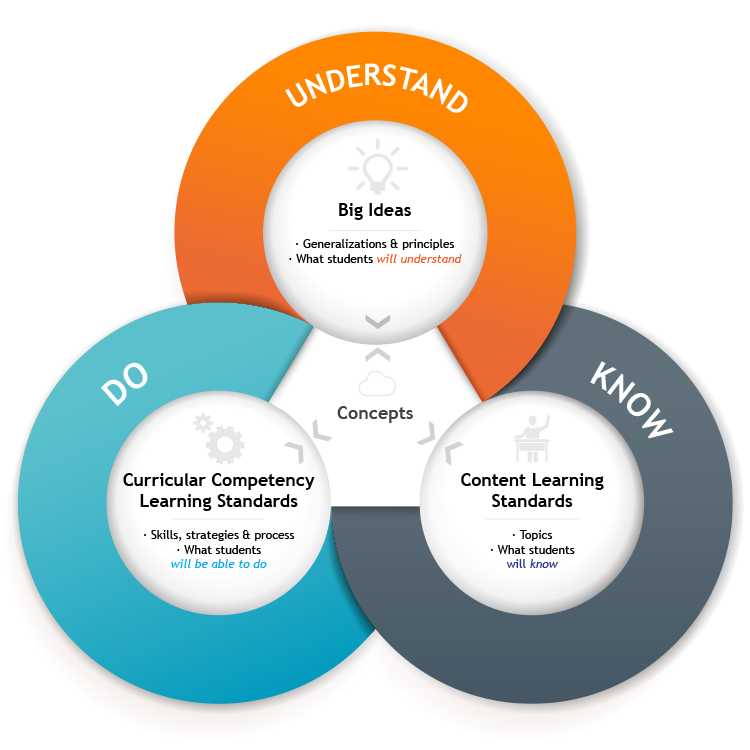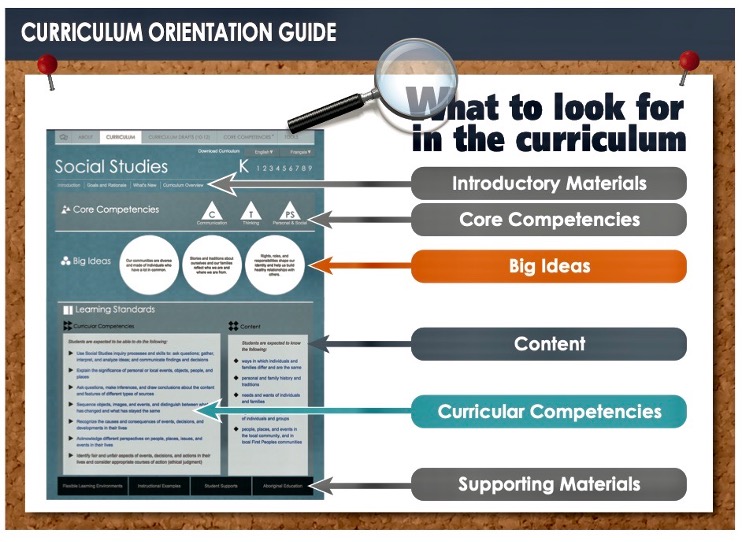Module 2: The B.C. Curriculum and Students with Complex Needs
The B.C. Curriculum
The B.C. Ministry of Education describes curriculum as a defined set of knowledge and skills that students are expected to learn. It is what guides a teacher in their lesson planning and ensures that there is consistency of material taught across classrooms, schools, and districts. In 2015, B.C. launched its most current redesigned curriculum.
Discover more about the B.C. Curriculum.
Redesigned Curriculum
“The redesign of curriculum maintains a focus on sound foundations of literacy and numeracy while supporting the development of citizens who are competent thinkers and communicators, and who are personally and socially competent in all areas of their lives.”
B.C. Ministry of Education, Rethinking Curriculum
The redesigned curriculum continues to be built on literacy and numeracy foundations and includes 3 Core Competencies that form the basis for learning:
- Thinking
- Communication
- Personal and Social
The curriculum was designed so that accommodations could be made to make it accessible to every student in British Columbia. The focus is less on the regurgitation of facts and content and more on a deeper knowing and understanding. This is achieved by concept-based learning guided by the Big Ideas. The Big Ideas are basically what students will come to understand.
When you look at the B.C. curriculum, you will see that it consists of 3 elements:
- Content—What students are expected to know
- Curricular Competencies—What students are expected to do
- Big Ideas—What students are expected to understand
A good example to compare the old curriculum with the new curriculum is in the study of the Gold Rush. The old curriculum would generally require students to know the historical facts about the Gold Rush, such as relevant dates. The new curriculum would focus on the bigger picture—perhaps asking the student, “What effects did the Gold Rush have on the economy of B.C.?”
As technology makes facts so easily accessible, the redesigned curriculum moves away from rote learning. Students can search online to find out that the Gold Rush started in the Fraser Valley in 1858.

How Does this Fit with the Educational Needs of Learners with Complex Needs?
The competency-based curriculum fits in well with creating meaningful opportunities for learning for students with complex needs. Using the Big Ideas, you can make the content goals meaningful and interesting for all your students. Students with complex needs can participate in and contribute to the classroom.

From B.C.'s Redesigned Curriculum: An Orientation Guide (PDF)